What the Chinese Chang’e 6 mission aims to bring back from the Far-side of the Moon

The Lunar Geologic Timescale

The geological history of the Moon has been dominated by catastrophic impacts, separated by longer periods of gradual erosion and intermittent volcanic activity. Regolith accumulated on each deposit in direct proportion to its exposure duration and the prevailing impact conditions. Countless minor impacts continuously blurred surface textures, although subsurface geometries remained intact until disrupted by major impacts. Large impacts mixed ejecta with materials from various sources, including crater and basin units, regoliths, volcanic lavas, and subsurface intrusions.
A Summary of the Evolution of the Moon. Credits: NASA/GSFC
Since the solidification of the crust, the lunar surface has consistently featured craters, ringed basins, and dark maria. However, the proportions of these features have evolved; the distribution of maria has continuously changed as new basins formed, filled with lava, and were overlain by ejecta from subsequent impacts. Volcanic activity persisted even as the rate of impacts declined, leading to more exposed basalt in later lunar history.
Pre-Nectarain Era and The South Pole Aitken Basin
The lunar and pre-Nectarian history of the Moon began around 4.55 Ga (Billion years), not long after the formation of the Moon itself. The exact process of accretion and the specifics of these early materials remained a subject of debate among researchers [3]. The pre-Nectarian period saw the formation of 30 identified basins, including notable ones like the Procellarum and South Pole-Aitken basins, which excavated material from about 40 percent of the Moon’s surface. The impact basins formed during this era are particularly significant as the South Pole-Aitken basin is recognized as the oldest.
The South Pole-Aitken Basin (SPA) is characterized by its elliptical shape, spanning dimensions of 2400x2050 KM, and centered at ~(53°S, 191°E). Analyses within the basin's best-fit ellipses indicate a north-south alignment in the distribution of iron, thorium, and regions of high topography, suggesting that an oblique impact may have influenced these distributions. The outer ellipse of the basin forms a discontinuous ring, prominently defined near the south pole and in the northeast, where the surrounding topography is elevated. However, this ring appears much weaker in the western regions [4].
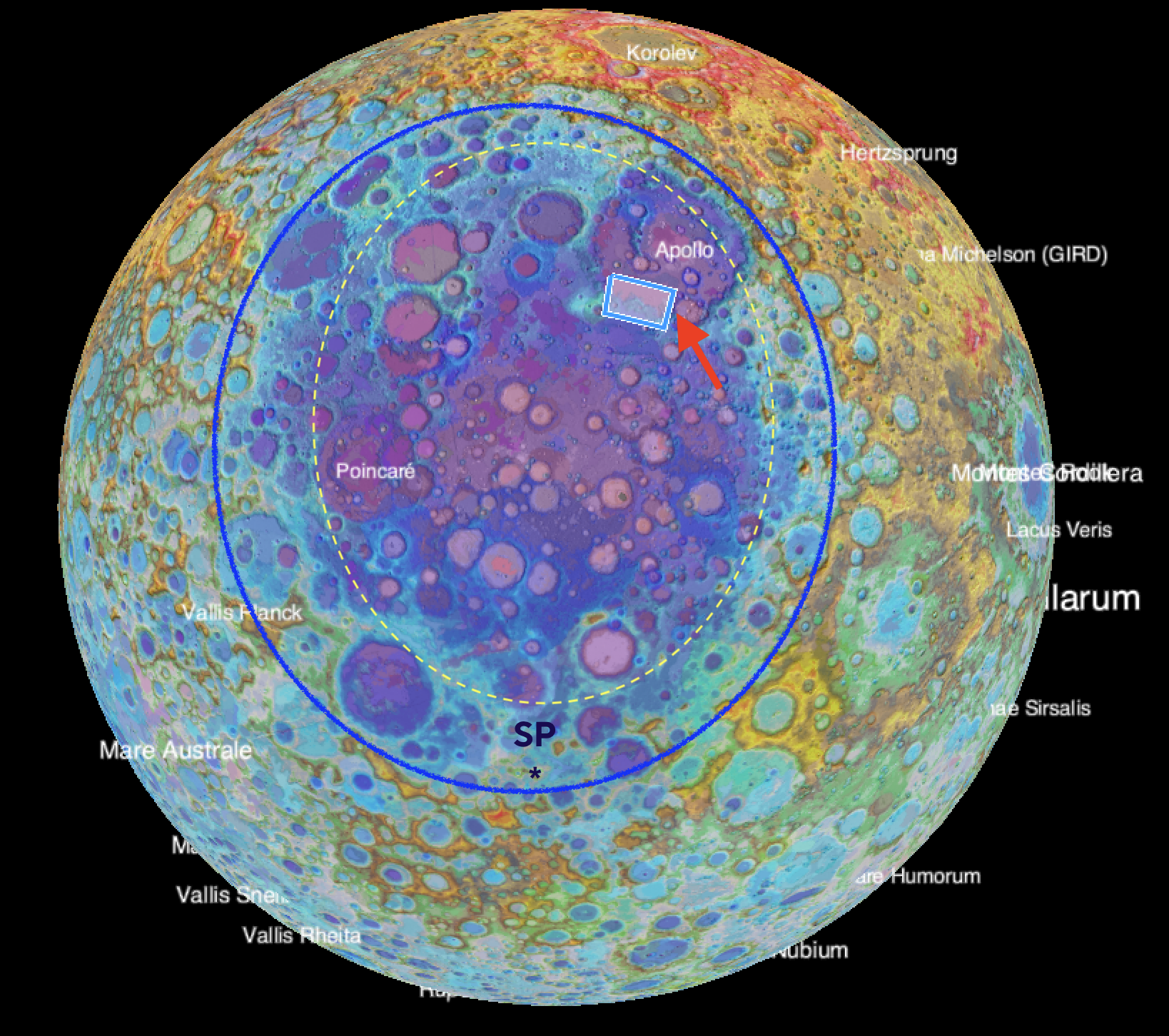
The SPA basin's large, multi-ring, and elliptical structure, with a distinctive ~1.4 scaling along one axis, presents a unique geological framework. This makes it an invaluable natural laboratory for studying the generation and scaling of planetary rings, the dynamics of elliptical crater formation, and the development of massive basins more broadly [5].
Chang'e 6 Soil Sample Return Mission
The geological significance of obtaining samples from the South Pole-Aitken (SPA) Basin has become increasingly evident through recent advancements in lunar geological mapping. These efforts have been pivotal in studying the Moon's characteristics. Starting with the Chang'e-1 mission, the initial geological maps at a scale of 1:2.5 million [6] laid the groundwork for China's lunar exploration and were instrumental in the creation of a spatial database [7], marking a significant leap in Chinese planetary geological mapping.
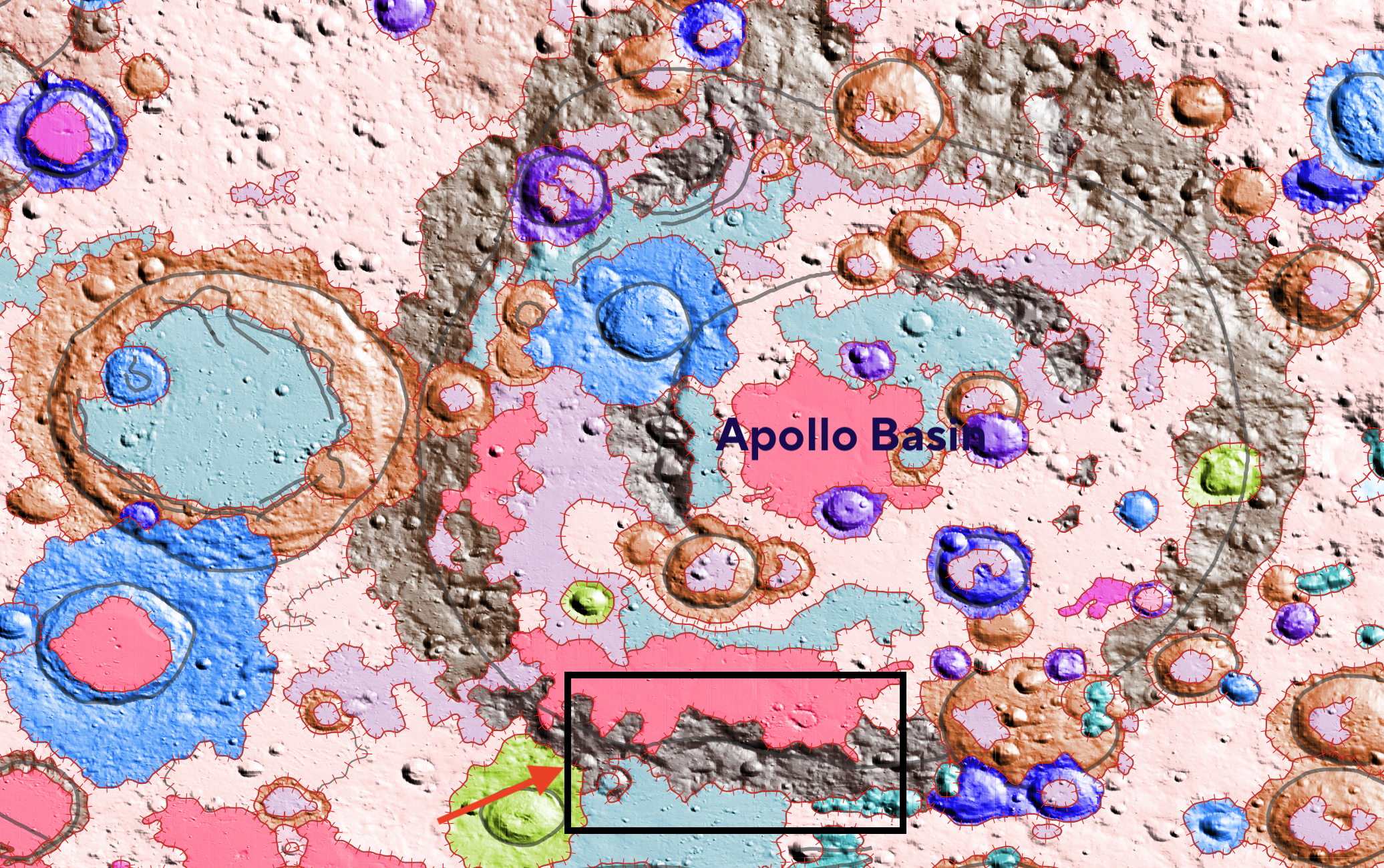
In recent years, a comprehensive set of 1:2.5 million scale lunar geological maps was developed, encompassing the entire Moon. These maps detailed geological features, rock type distribution, and tectonic outlines [8-10], thereby enhancing the scientific community's ability to conduct detailed geological analyses. The Chang'e-6 mission, built on this foundation, is specifically designed to land in the lunar polar region and return samples [1].

Based on the study of the total area of ~890,000 km2 centered around the Apollo Basin, the site located in the southern part of the Apollo Basin within the SPA Basin (43°±2°S, 154°±4°W) is selected to support further research and sample return initiatives by the Chang'e-6 lunar probe.
The Apollo Basin is a focal point for current lunar geological research due to its exceptionally thin crust and prominent peak ring structures. These features suggest that the basin may expose some of the deepest lunar materials, potentially providing unique insights into the Moon's internal composition and geological history.
There remains significant debate regarding the composition of the lunar mantle in this region. There is a discrepancy between the in-situ observations from Chang'e 4 mission's Yutu-2 Rover which indicated the mantle's composition in the Von Kármán impact crater is primarily of olivine followed by low-calcium pyroxene [12], however, this contradicts the previous research in [11] which observed an abundance of low-calcium pyroxene in the same basin. This discrepancy raises questions about the heterogeneity or layered structure of the lunar mantle, which might vary significantly even within the same basin.
The Chang'e-6 mission is poised to play a crucial role in resolving these controversies. By landing in the Apollo Basin and collecting samples, particularly of low-calcium pyroxene rocks, Chang'e-6 could provide direct, on-site analyses of these materials. These samples would not only help determine the precise age and detailed chemical and mineralogical composition of the lunar mantle but also enhance our understanding of the geological processes that have shaped the Moon. Such data are vital for advancing our knowledge of lunar geology, particularly in terms of the composition and evolution of the lunar interior.
As of the drafting of this article, Chang'e 6 is en route to its designated sample collection site, though the exact location has not been disclosed to the public. I will continue my analyses pre and post-landing of Chang'e 6 in my Lunar Exploration series. To stay informed about the latest updates as soon as they are published, be sure to subscribe.
~FIN
[1] Liu, Liwei et al. "Regional Geological Characteristics and Evolution Analysis of the Pre-Selected Landing Area for the Chang'e-6 Probe." Frontiers of Earth Science, https://doi.org/10.13745/j.esf.sf.2023.12.29. Originally published in Chinese as "嫦娥六号探测器预选着陆区区域地质特征及演化分析"
[2] "Lunar Geologic Settings." Caltech Trailblazer, https://trailblazer.caltech.edu/lunarGeologicSettings.html.
[3] Wilhelms, Don. Geologic History of the Moon. U.S. Geological Survey Professional Paper 1348, 1987.
[4] Garrick-Bethell, Ian, and Maria T. Zuber. "Elliptical Structure of the Lunar South Pole-Aitken Basin." Icarus, vol. 204, no. 2, 2009, pp. 399-408. https://doi.org/10.1016/j.icarus.2009.05.032.
[5] Andrews-Hanna, J.C., Zuber, M.T., and Banerdt, W.B. "The Borealis Basin and the Origin of the Martian Crustal Dichotomy." Nature, vol. 453, 2008, pp. 1212–1215.
[6] Ding, Xiaozhong, Han Kunying, Han Tonglin, et al. "Compilation of the Lunar Rainbow Bay (LQ-4) Geological Map." Frontiers of Earth Science, vol. 19, no. 6, 2012, pp. 15-27.
[7] Wang, Liang, Ding Xiaozhong, Han Kunying, et al. "Compilation and Research of Lunar Digital Geological Map." Chinese Geology, vol. 42, no. 1, 2015, pp. 331-340.
[8] Ji, JZ, Guo, DJ, Liu, JZ, et al. "The 1:2,500,000-Scale Geologic Map of the Global Moon." Science Bulletin, vol. 67, no. 15, 2022, pp. 1544-1548.
[9] Chen, J, Ling, ZC, Liu, JZ, et al. "Digital and Global Lithologic Mapping of the Moon at a 1:2,500,000 Scale." Science Bulletin, vol. 67, no. 20, 2022, pp. 2050-2054.
[10] Lu, TQ, Zhu, K, Chen, SB, et al. "The 1:2,500,000-Scale Global Tectonic Map of the Moon." Science Bulletin, vol. 67, no. 19, 2022, pp. 1962-1966.
[11] Yamamoto, S., Nagaoka, H., Ohtake, M., et al. "Lunar Mantle Composition Based on Spectral and Geologic Analysis of Low-Ca Pyroxene- and Olivine-Rich Rocks Exposed on the Lunar Surface." Journal of Geophysical Research: Planets, vol. 128, no. 5, 2023.
[12] Li, CL., Liu, DW., Liu, B., et al. "Chang'E-4 Initial Spectroscopic Identification of Lunar Far-Side Mantle-Derived Materials." Nature, vol. 569, no. 7756, 2019, pp. 378-382.

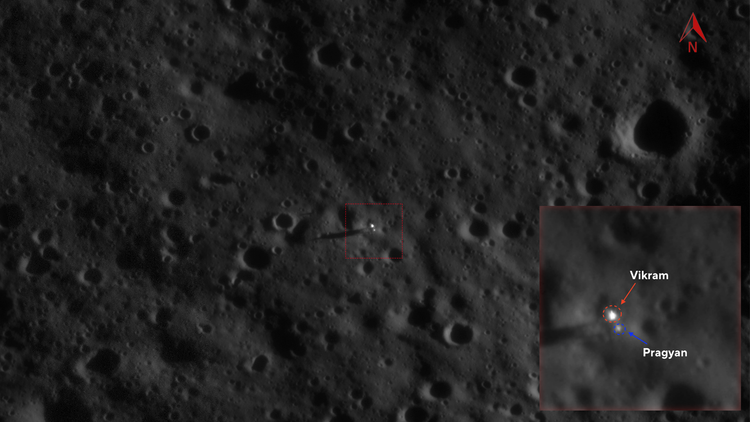
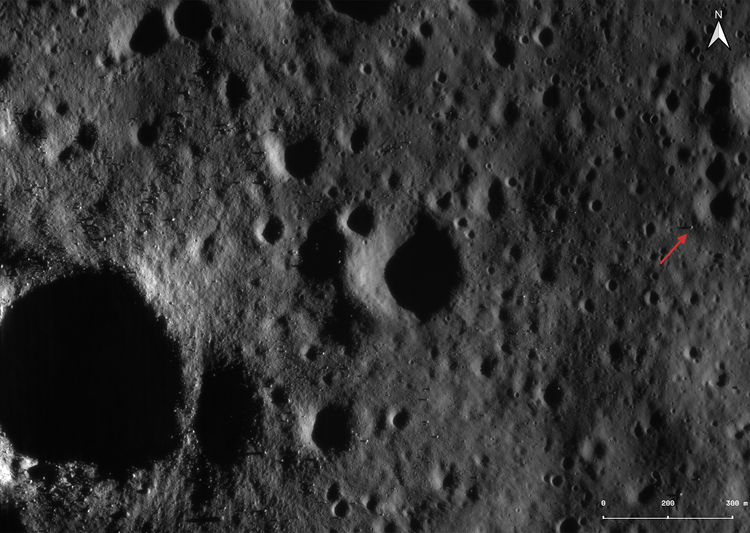
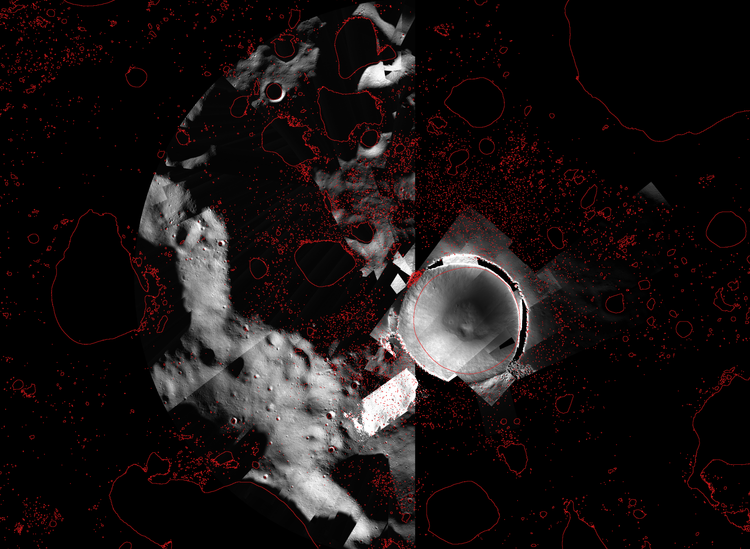
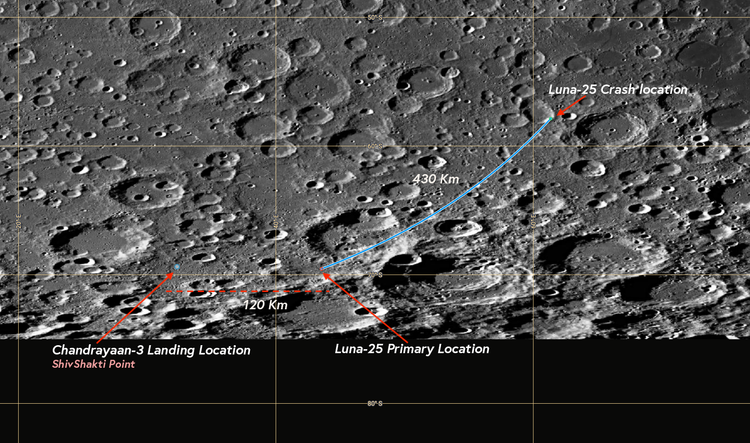
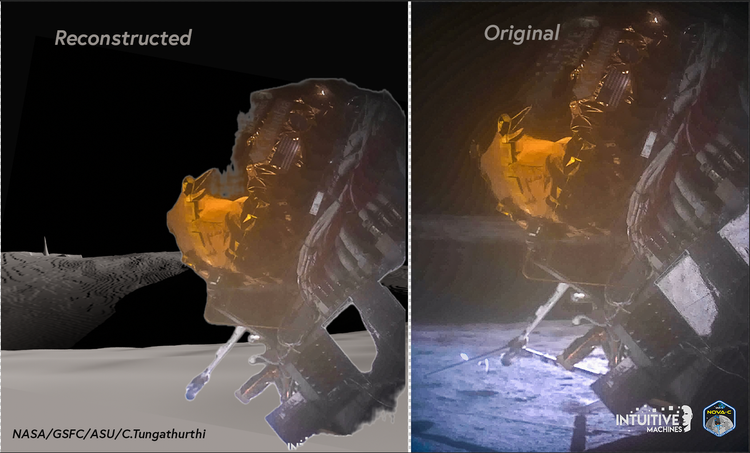
Member discussion